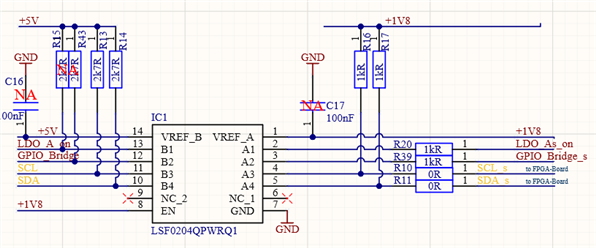Hi guys,
I`m using the LSF0204QPWRQ1 for a downtranslation from 5V to 1.8V side.
Two pins are for I2C (B3, B4) and B1,B2 are GPIO-Pins coming from a uC 5V side.
The issue is I measure at Pin A1/A2 1.97V but the VREF_A is 1.80V.
Where does that 0.2V increase come from or what can I do?
There is nothing else on the +1V8 rail which consumes current. I tried so solder a 2kR resistor in case there is a current flowing into the source which levels up my 1.8V rail. But there was not difference, still 1.97V.

Any hints or advices?
Thanks,
Markus

